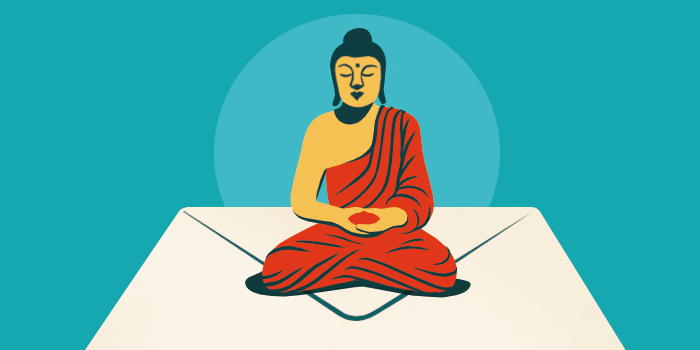What is Mahayana Buddhism?

A Chinese Mahayana Buddhist temple in Singapore | Songquan Deng / Alamy Stock Photo
The second major vehicle of enlightenment to emerge is the Mahayana (“great vehicle”) tradition. Though its origins are not precisely known, scholars believed it arose in the 1st century CE and existed side-by-side with Theravada for some time before becoming a separate tradition. Mahayanists view their teachings as the “second turning of the wheel of dharma.” (The first turning refers to the Buddha’s initial teachings after his enlightenment, when he introduced the four noble truths.)
Mahayana Buddhism shares with Theravada a belief in the core teachings of the Buddha, but follows Sanskrit scriptures composed as much as 400 years after the Buddha’s death that are held to represent the words of the Buddha (buddhavacana). While individual awakening is the goal for most Theravadins, attained in gradual stages and only after lifetimes of practice, the Mahayana tradition teaches that all beings inherently possess buddhanature, the seed of awakening: thus perfecting the qualities of a buddha the buddha-to-be can remove hindrances to realization even within a single lifetime. The Mahayana spiritual model is the bodhisattva, who is motivated by bodhicitta, the desire to awaken to help all beings realize their true nature. The Buddha in Mahayana is eternally present in a pantheon of buddhas, bodhisattvas, and enlightened beings who can be called on for support.
Like the Theravada, the Mahayana schools teach practitioners to cultivate the paramitas (Pali, paramis), qualities such as generosity, morality, patience, concentration, and wisdom. Particularly associated with Mahayana is prajnaparamita, the understanding that all beings and phenomena are empty of inherent existence and arise only interdependently. Shunyata, or emptiness, is a central teaching in the Prajnaparamita (Perfection of Wisdom) Sutras, fundamental texts of the Madhyamaka, or Middle Way school. The related doctrine of “two truths” holds that the everyday dualistic world of appearances (relative or conventional reality) and absolute or ultimate reality (emptiness) are not separate but one. Yogacara, the Mind-only school, asserts that reality in any form is a mental construct. Continuity of the phenomenal world is ascribed to a “storehouse” consciousness.
As Theravada moved south from the Ganges Valley, the Mahayana tradition spread north and east, roughly following the trading routes of the Silk Road. From China, Chan Buddhism migrated to Korea as Seon (or Son), to Vietnam as Thien, and to Japan as Zen. Other Mahayana schools developed in Japan, including the Pure Land schools and those based on the teachings of Nichiren, a Japanese priest. Vajrayana, a form of Mahayana that draws upon on esoteric Indian texts called tantras, settled in Tibet and the Himalayan region, and to some extent in Japan, in the Shingon and Tendai traditions.

Tricycle is more than a magazine
Gain access to the best in sprititual film, our growing collection of e-books, and monthly talks, plus our 25-year archive
Subscribe now